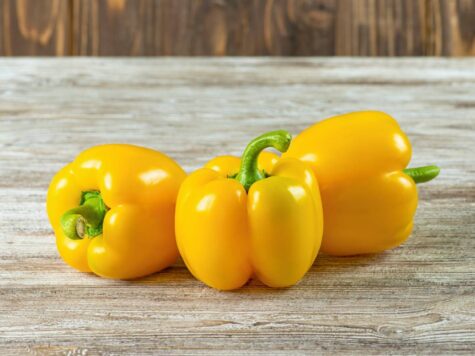Garlic is one of the most useful ingredients that you can have in your kitchen. It adds base flavour to so many dishes from so many different cuisines. Even though store-bought bulbs of garlic are relatively inexpensive, by regrowing your own, you can ensure you have a constantly replenished store of fresh, home-grown garlic, meaning you will never have to pay for it again.
With the cost of living only going up, and a so-called food crisis on the way, many experts are predicting that staple ingredients that we use every day will become more expensive and may even be harder to source. So the best way to counteract this is to become as self-sufficient as possible. But that doesn’t necessarily mean moving to Alaska and dropping off the grid. There are many small measures we can take to ensure that we are more food autonomous, reduce waste, have tastier, organic, home-grown ingredients and eat more seasonably – and it costs us nothing. This method works with all varieties of garlic, including hard neck garlic and elephant garlic.
How to regrow garlic quickly and easily
The first step is to germinate the garlic bulbs and this is very easily done. Take your garlic bulbs and peel off the outer skin, exposing the garlic cloves underneath, but leave them intact. You can help your garlic bulbs to sprout by using a sharp knife to chop off the tip of each clove.
In the video below, empty plastic bottles are recycled by cutting holes in the side, in which to insert the garlic bulbs. But you can also use smaller plastic bottles standing vertically for individual bulbs. It’s important that the garlic remains upright and sitting just about half an inch above the water, so it doesn’t fall onto its side. You can use whatever container you wish as long as it allows the garlic to sit straight without falling over. Leave the garlic in a sunny place, either outside if the weather is mild, or inside – like on a windowsill.
After one day, green shoots will have grown from your garlic bulb. On the second day, you will see roots growing from the garlic bulb, downwards in order to reach the water.
The shoots will continue to grow, and after about a week your garlic bulbs will be transformed into plants with bushy leaves. It is now time to plant. Garlic works nicely in well-drained containers, and they need rich, well-fed soil. And plenty of sun.
At this point, you can separate the cloves from the bulb, and you can plant garlic cloves so the tops are covered by 2 inches or 5 cm of soil, and water liberally.
When is the right time to plant garlic?
You can plant garlic in the spring or in the autumn/fall. If you plant in the autumn, and you are in the north, you may need to cover the soil with mulch to protect the bulbs from early frost.
How do I know when garlic is ready to harvest?
The garlic will tell you when it’s ready to be harvested as the leaves will turn yellow or brown. When you see this, simply pull up the garlic from the ground. Allow the bulbs to dry in the sun for a few hours before cleaning by brushing off any soil. Then take the bulbs of garlic and plait the leaves and stems so you can hang the garlic in a cool, dry place for 2-3 weeks. Make sure you retain a number of garlic bulbs so you can replant them.
How to store garlic
Do not store garlic in the refrigerator, as the cold temperature encourages the bulbs to sprout. Instead, store garlic in a well-ventilated cupboard. Garlic prefers temperatures of between 60 – 65 degrees F.
Make garlic paste
You can make garlic paste in a food processor, by whizzing together garlic, olive oil, salt and a squeeze of lemon juice. This paste can be put in an airtight container and stored in the fridge for when you need to use it. It is so versatile and handy to have in the fridge, adding a spoon of garlic paste will improve just about anything.
How to preserve garlic
Peel your garlic cloves and place them in a glass jar. Cover the garlic with white wine vinegar and you can store it in the fridge for months. Garlic’s natural oils prevent the garlic from assuming the flavour of the vinegar, and the vinegar prevents any harmful bacteria from forming. The vinegar will assume the flavour of the garlic, so you can mix it with olive oil for a salad dressing.
Can you freeze garlic?
Yes, you can freeze garlic. Simply place individual, peeled cloves in a zip-lock bag and place in the freezer. It will last up to a year, however, the flavour may be dulled by the freezing process.



